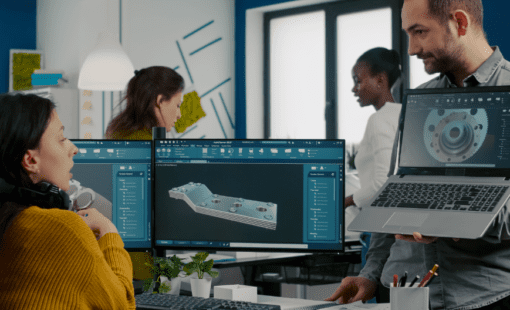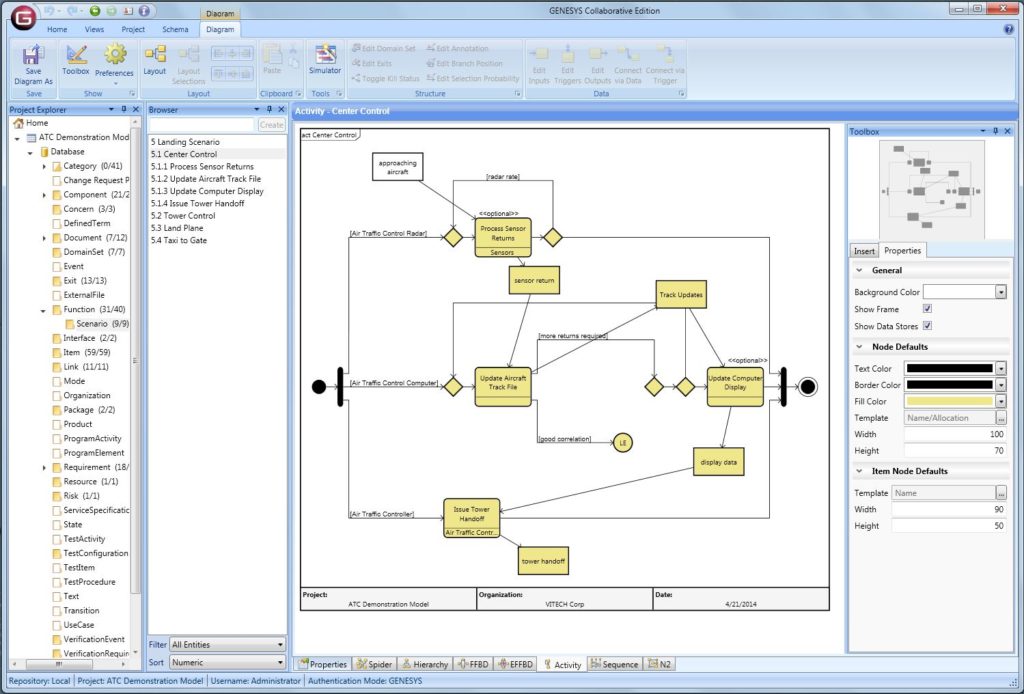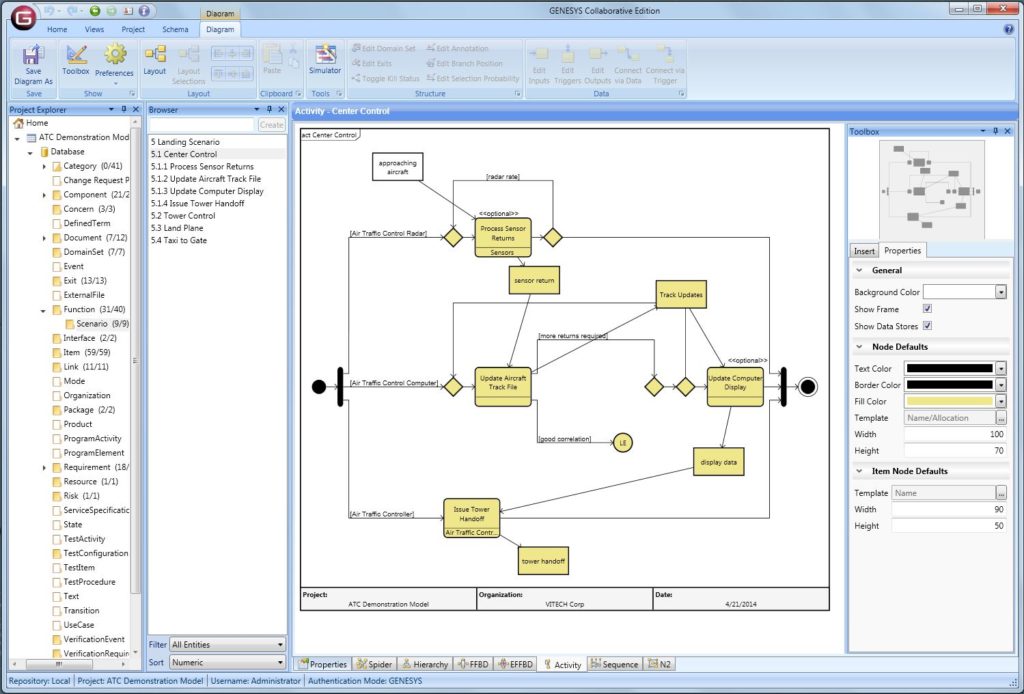MBSE for Electrical and Electronic Design
Digital Engineering requires a model-based design process that begins in Systems Engineering. Zuken acquired Vitech Corporation, a leader in Systems Engineering practices and model-based systems engineering (MBSE) solutions, with the intent of implementing an E/E model-based design process. The model-driven system provides a single source of truth for the product development process.

Collaborative Model Creation
GENESYS implements proven model-centric approaches leveraging modern technologies in a completely open architecture. The result is the power of a full MBSE environment with the usability of modern office tools integrated with your desktop, engineering, and enterprise environments to deliver your data your way.
GENESYS delivers connectivity through a collaborative framework that supports today’s geographically dispersed engineering teams. Build better models and deliver better products.
- Integrated requirements management
- Fully executable behavior models
- Architecture development tools
- Validation and Verification
Related Resources

Create Tomorrow’s Connected Defense Systems - Visit Zuken at DSEI in Hall S15-330 - ExCeL Centre London, UK - Sept 09-12, 2025

- Blog
What makes a winning Formula 1 car? Not brute force, but systems thinking. Find out how modern teams use MBSE to strike the right balance between aerodynamics, power, weight and heat, and transform complexity into faster lap times.

- Press Release
This latest release of GENESYS 2025 focuses on enhancing model structure, streamlining interoperability between tools, and accelerating the adoption of key industry standards that are vital for designing large-scale mission-critical and enterprise systems.

- Press Release
A new alliance blends a long-term strategic foresight with Zuken’s flexible MBSE platform, helping organisations turn volatility into competitive advantage.

- Blog
Explore the shift to Model-Based Development in mechatronic systems, enhancing efficiency and collaboration beyond traditional documentation.
Latest Related Blog Posts

- Blog
What makes a winning Formula 1 car? Not brute force, but systems thinking. Find out how modern teams use MBSE to strike the right balance between aerodynamics, power, weight and heat, and transform complexity into faster lap times.

- Blog
Explore the shift to Model-Based Development in mechatronic systems, enhancing efficiency and collaboration beyond traditional documentation.

- Blog
MBSE has the power to design groundbreaking innovations, from spaceships to state-of-the-art electric vehicles. Its potential is transformative—but if it’s so revolutionary, why hasn’t it become the standard tool for every engineer? Dive into our latest blog post to explore the promise, the challenges, and the future of Model-Based Systems Engineering.

- Blog
Almost every technical product we use today is the result of a collaboration between different design disciplines: Mechanics, electronics, and software work together to fulfill the product's functions. Yet, true innovation goes beyond mere data integration - it thrives on the possibilities of product models and MBSE. Dive into our blog to discover how.


